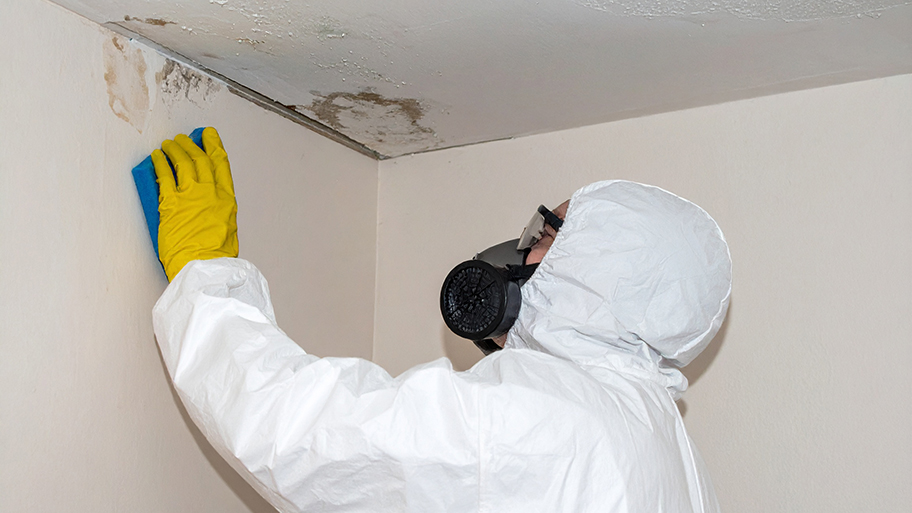
Mold remediation cost can quickly escalate. But if you have mold in your home, the cost for mold remediation is worth it.
Find the moisture level that's just right for your home


The relative humidity in your home affects the moisture level in your drywall.
When moisture levels are too high, there's a risk of mold growth and damage.
Lowering indoor humidity can help you control moisture issues.
If the moisture level in your drywall gets too high, you may need to replace it.
Drywall plus water can equal disaster. High moisture levels in your home's drywall weaken it, making it more likely to crumble and increasing the risk of mold growth. But what are acceptable moisture levels in drywall? There's a range, depending on location and your home's relative humidity.
A drywall moisture level between 5% and 12% is acceptable based on your home's relative humidity. Drywall moisture levels can creep up under certain conditions, such as following a leak, but they should remain under 17%.
Your home's relative humidity can fluctuate based on the seasons and weather conditions. However, a relative humidity of 50% or less is considered ideal. In the winter, you may want the interior humidity to be on the lower end, around 40%, while 50% should be appropriate in the summer.
A few factors can cause the moisture reading in your drywall to creep up. One is high indoor humidity. Areas such as your bathroom or kitchen may naturally be more humid than other parts of your home.
In some cases, high humidity can be due to poor ventilation or an HVAC system that's not functioning as it should. A leak can also make your home more humid and can dramatically increase the moisture content in your drywall.
You may be able to visually tell if there's too much moisture in your home and drywall. One obvious sign is mold in your house, which you may be able to smell or see. You can also test for mold to confirm its presence.
If the drywall is crumbly or discolored, it's likely that it's been exposed to high moisture levels at some point. Drywall that's been affected by water damage rather than mold may have peeling or bubbling paint.
If you can smell the odor and you can’t see it, usually that is a sign of something more serious. Mold can hide behind your walls and floors and will require a professional mold remediation company to run indoor air quality tests.

The trick to maintaining acceptable moisture levels in your drywall is maintaining appropriate moisture levels in your home overall. You can lower the humidity in your home by:
Running a dehumidifier
Taking cooler showers
Using an exhaust fan in the bathroom or kitchen
Improving ventilation in your attic
Using the air conditioning in the summer
If your drywall consistently has a high moisture reading, you may need to replace it or repair the section that is water-damaged. If mold growth has occurred, removing the mold from the drywall may be the best option.
If you're concerned about mold growth, consider hiring a local professional mold inspector to examine the drywall and recommend next steps.
I don't often write reviews unless I come across someone who earns my trust and who is really talented. Travis is all that, and more. Ten years ago I was searching for people to do major work to my house that was both inside and out. I thought I was going to need many different types of...
Mike was on time and professional. I would highly recommend his services. He found and installed hinges for our bathroom cabinet doors.
From average costs to expert advice, get all the answers you need to get your job done.

Mold remediation cost can quickly escalate. But if you have mold in your home, the cost for mold remediation is worth it.

The cost of a mold inspection might seem high, but it’s one of the best investments you can make for your health and home. Read on to learn cost-saving tips.

Got a moldy couch? You may not have to junk it. Learn how to remove mold from fabric furniture and keep your upholstery looking new.

Mold can enter your air ducts and lead to poor indoor air quality. Use this guide to learn how to get rid of mold in air ducts for healthier air.

A damp, flood-prone basement is the perfect habitat for mold. Here's how to get rid of mold in your basement and keep it from coming back.

These tips will safeguard your home from mold growth after water damage. Protect your house and your health with these expert mold prevention strategies.